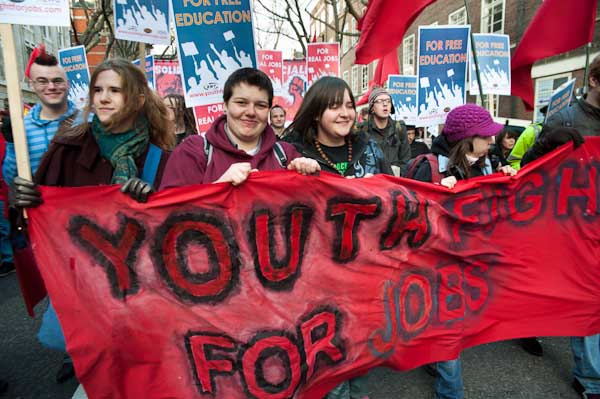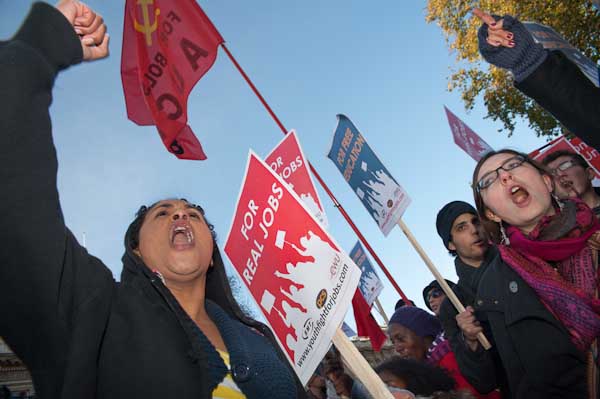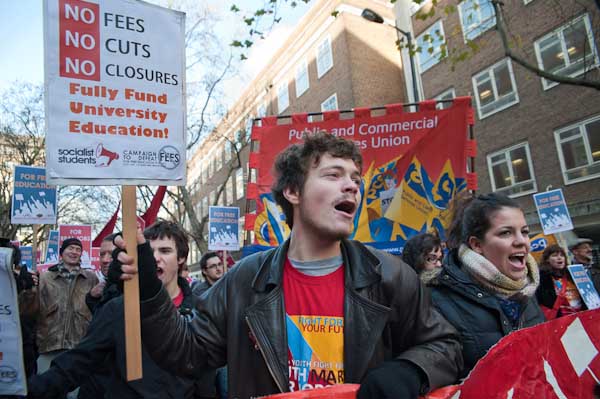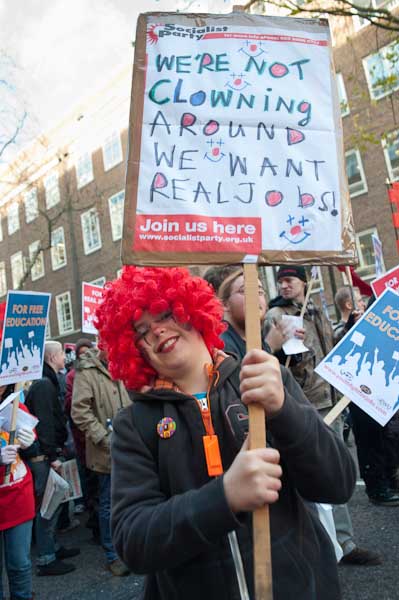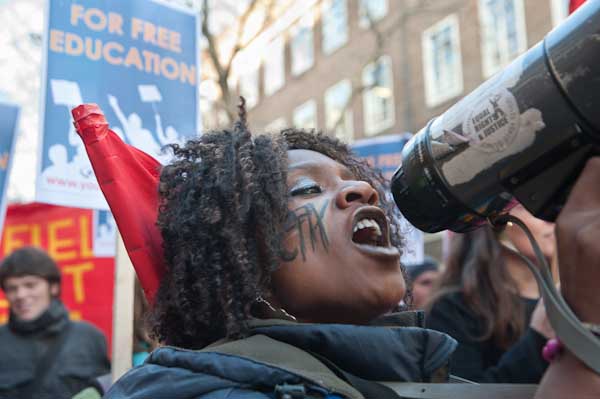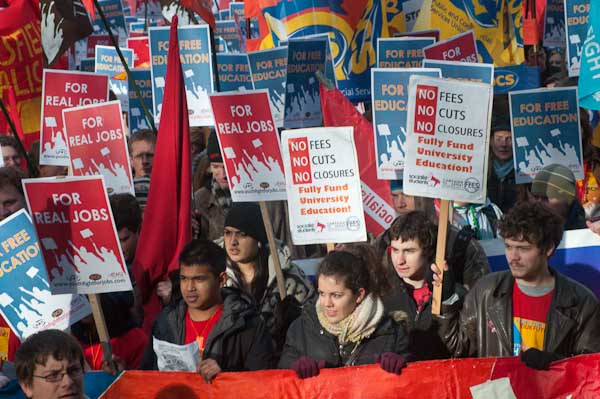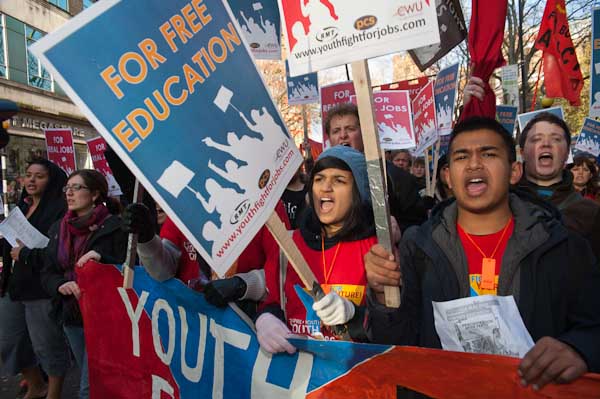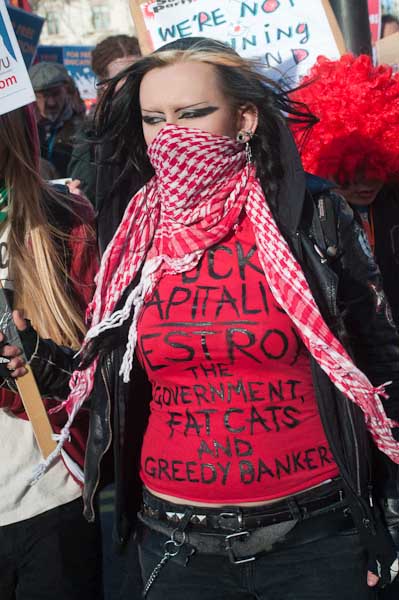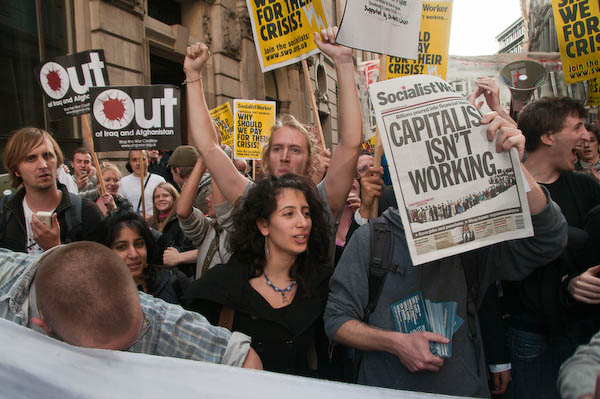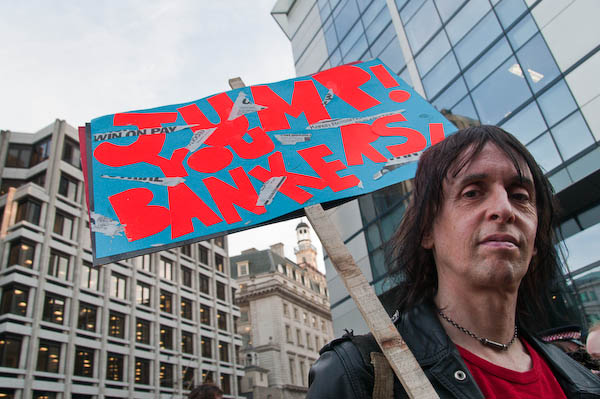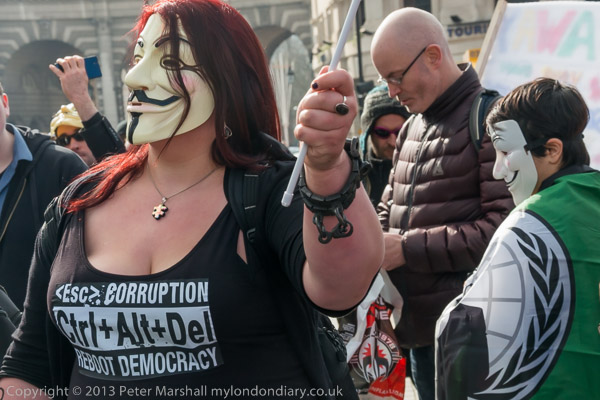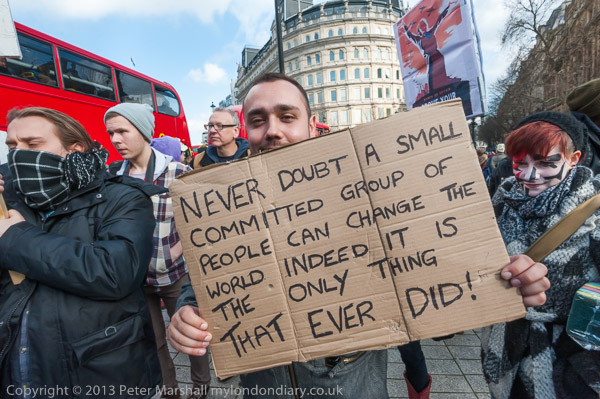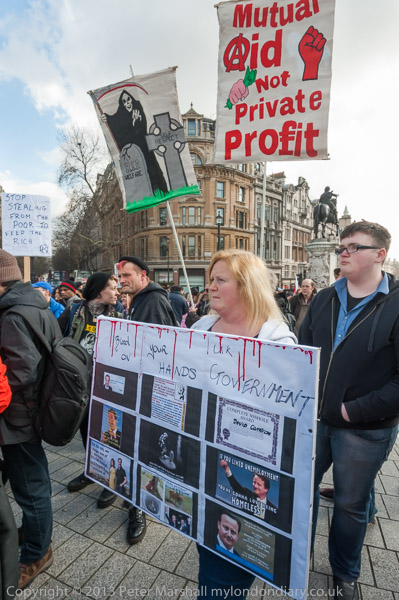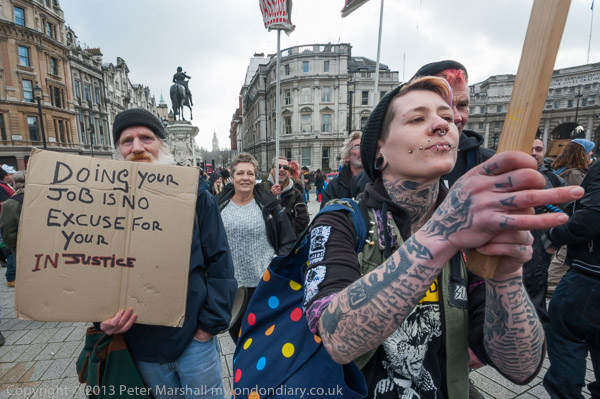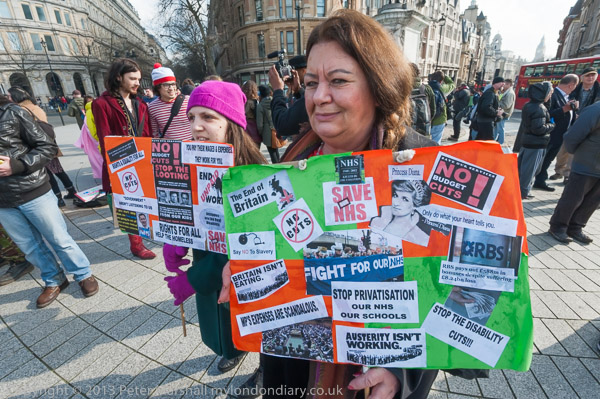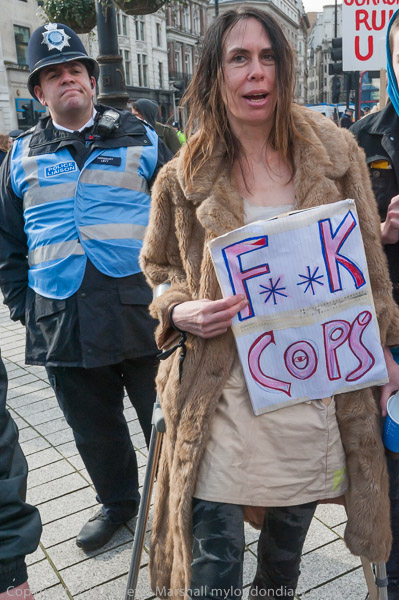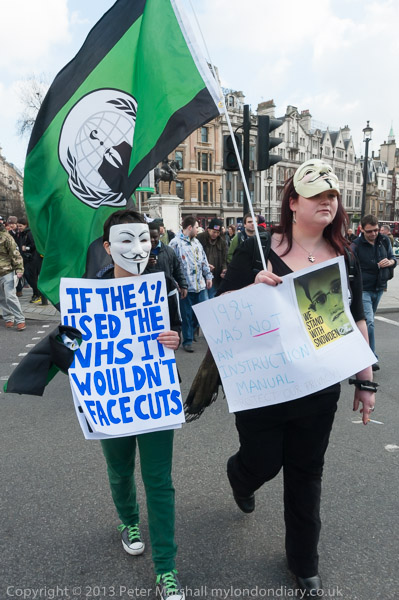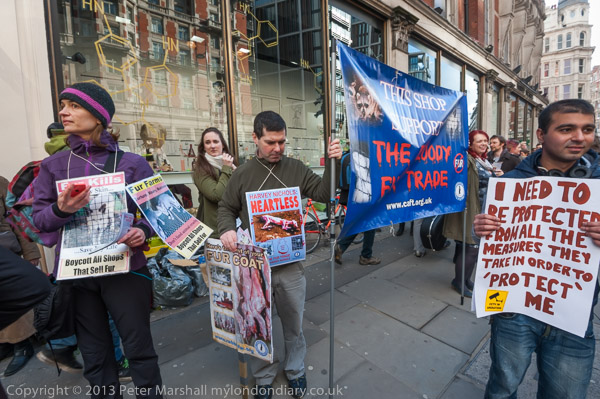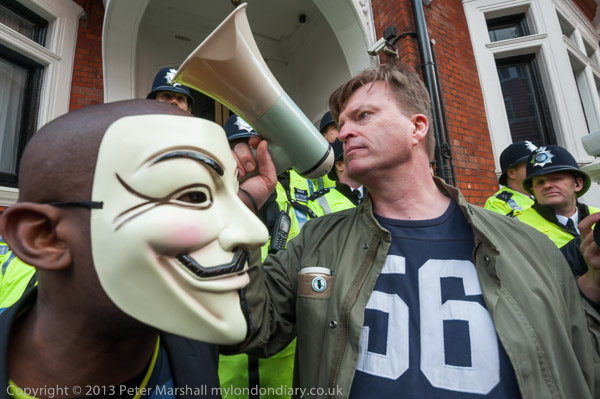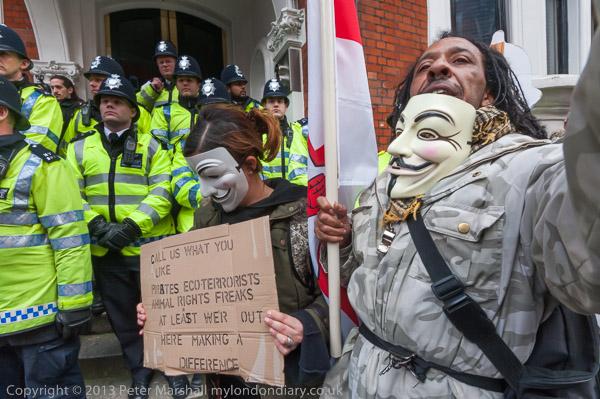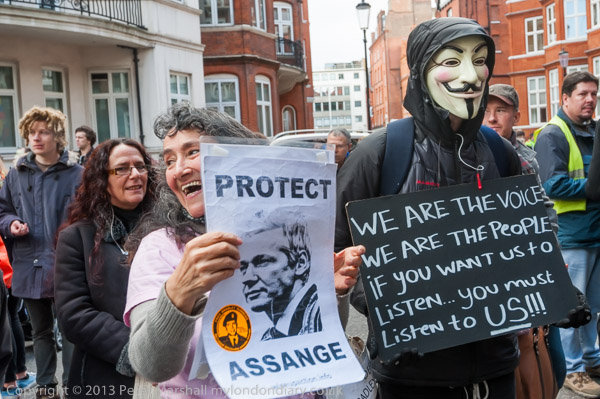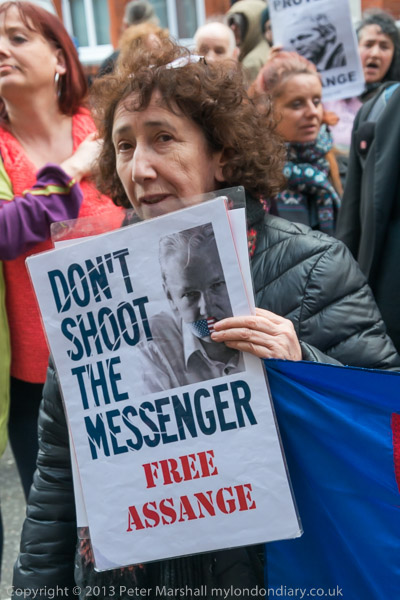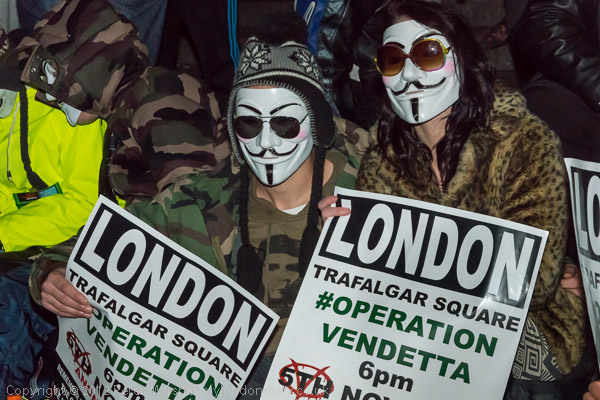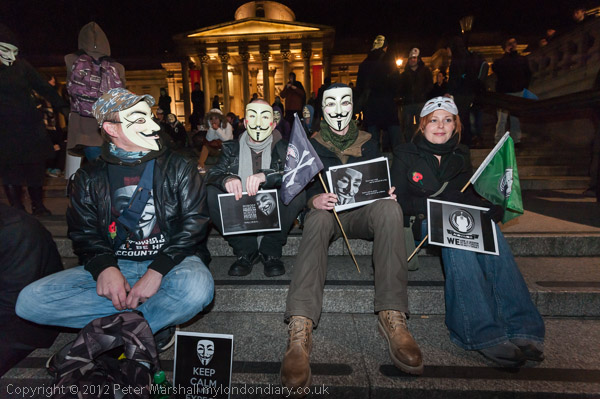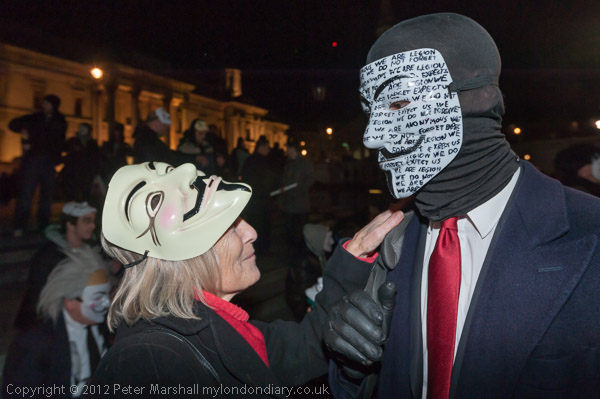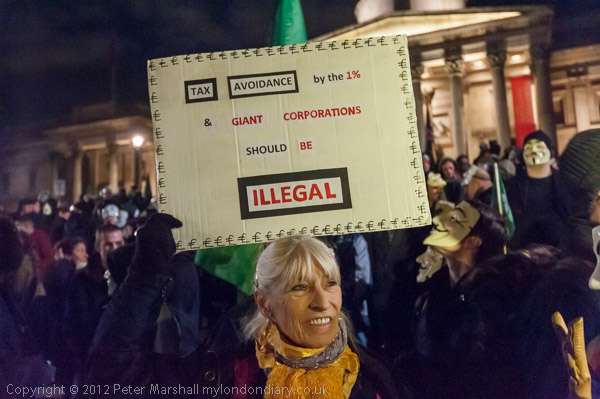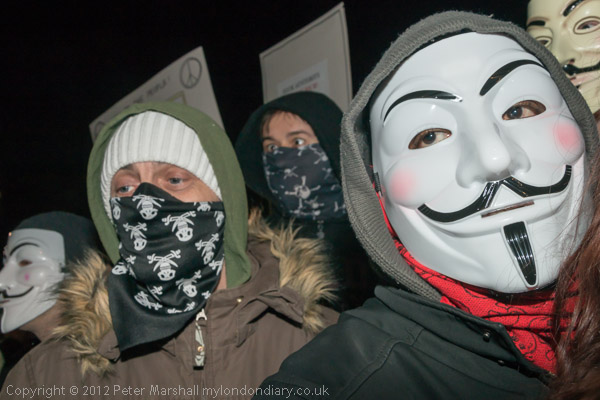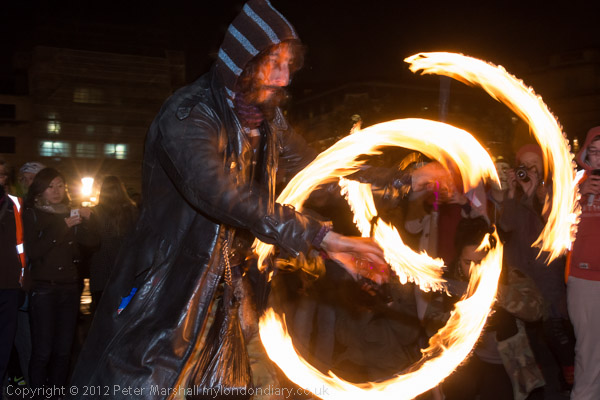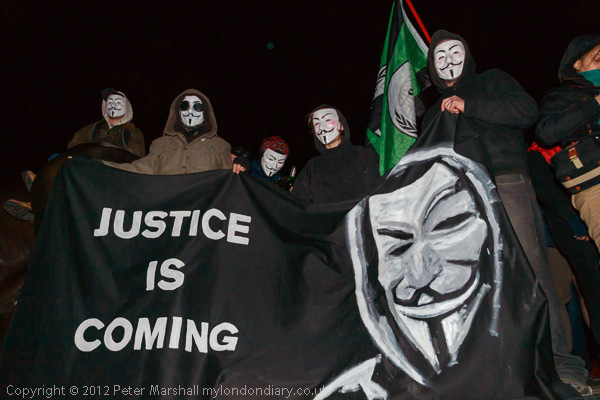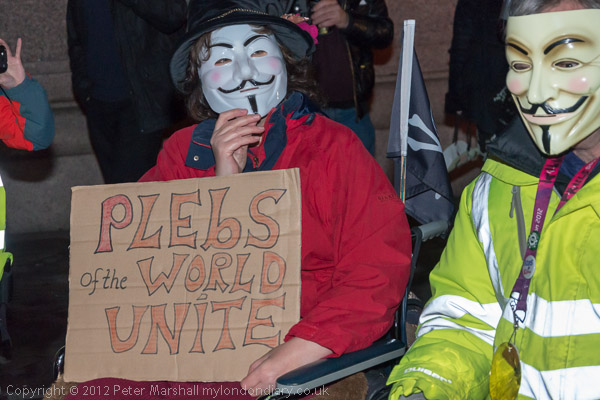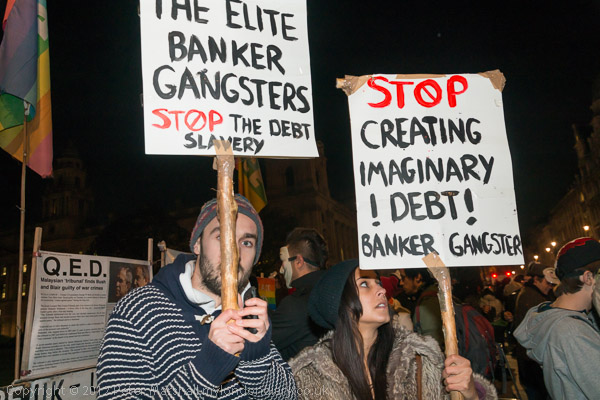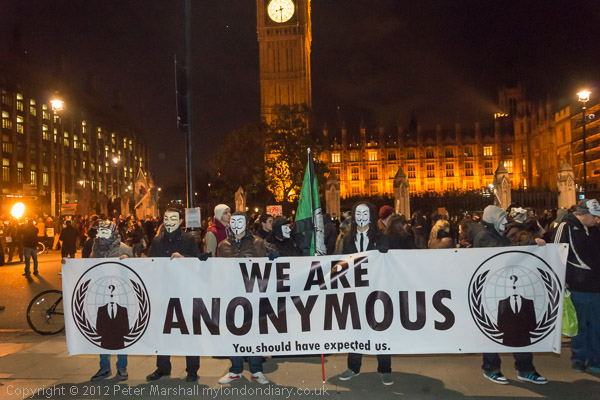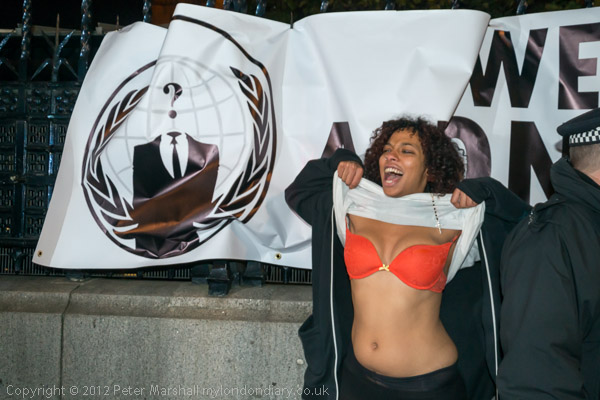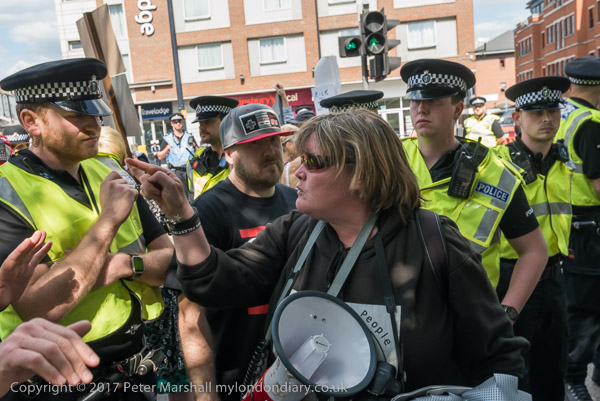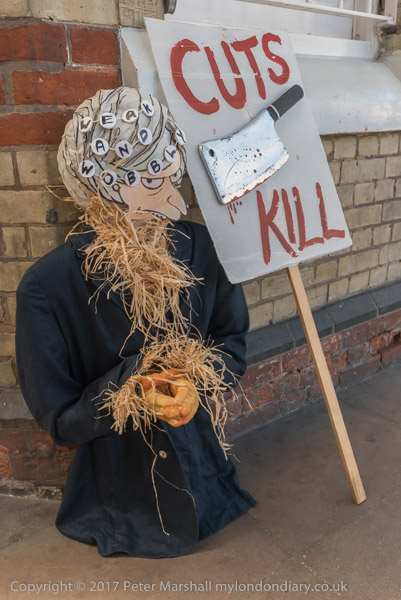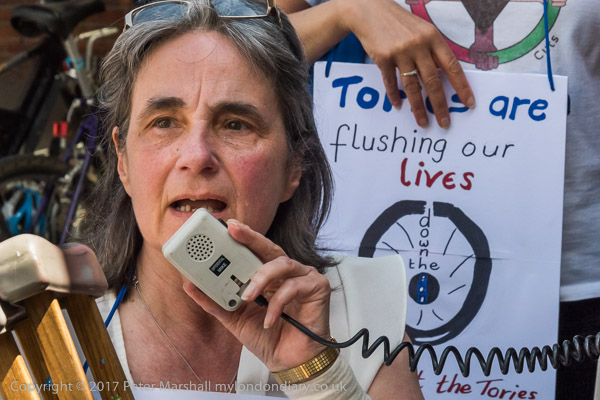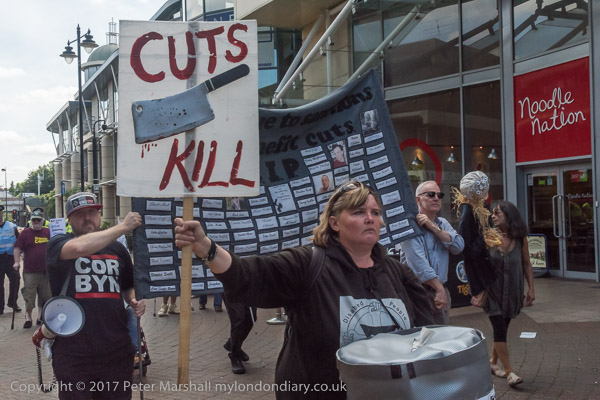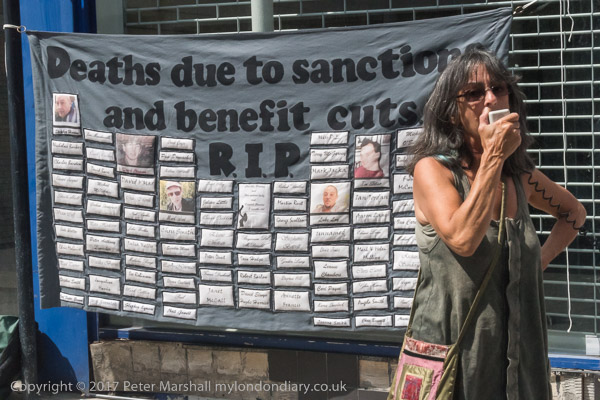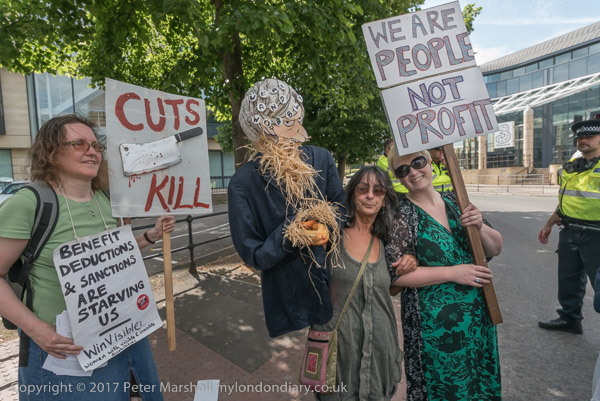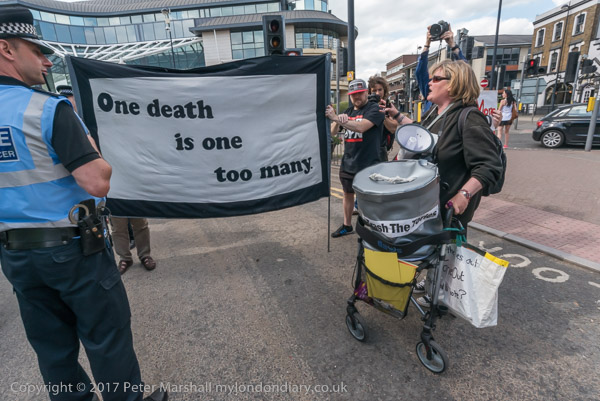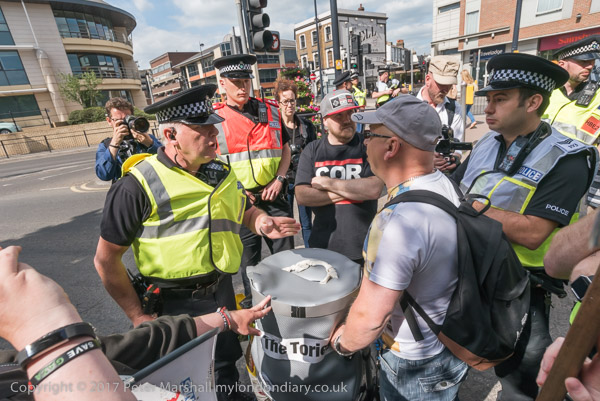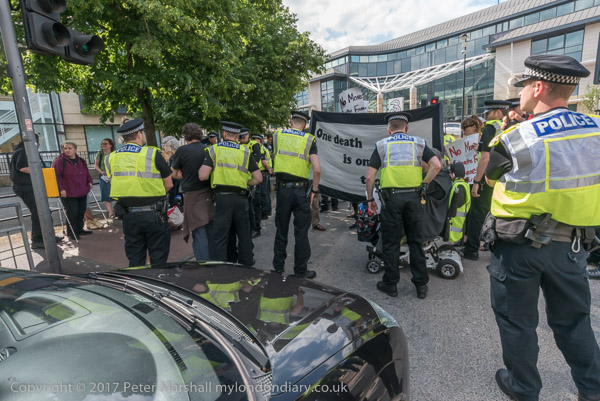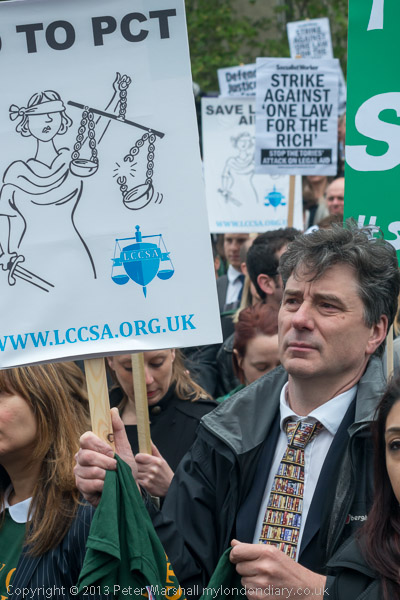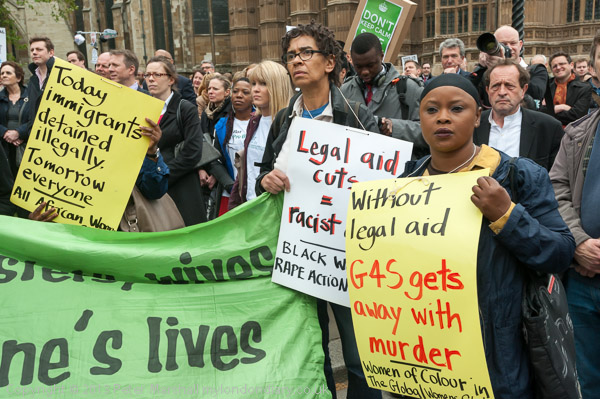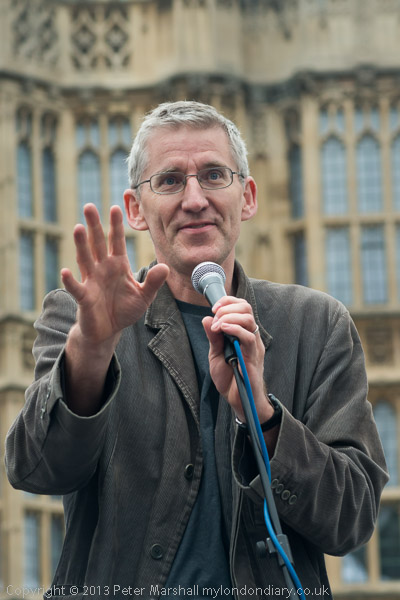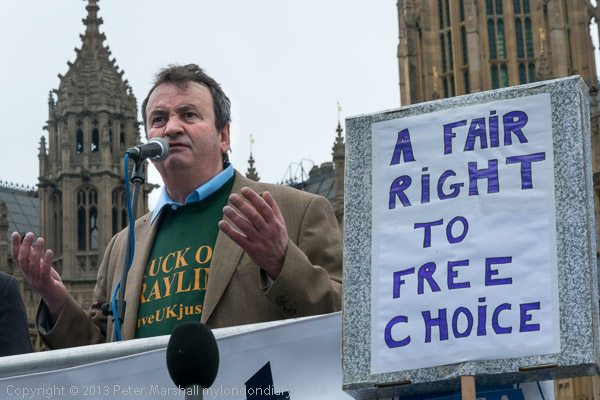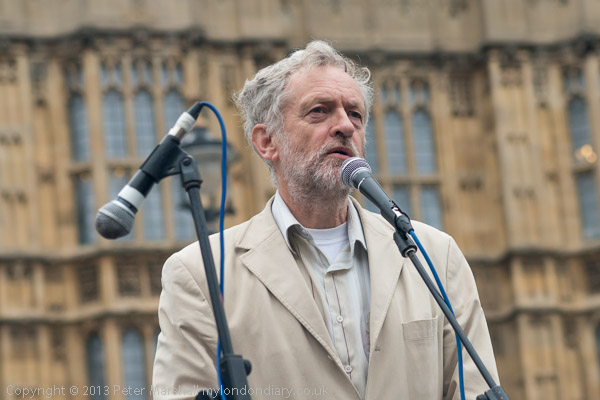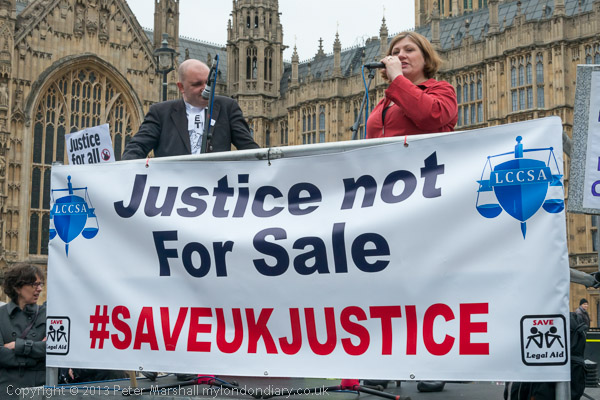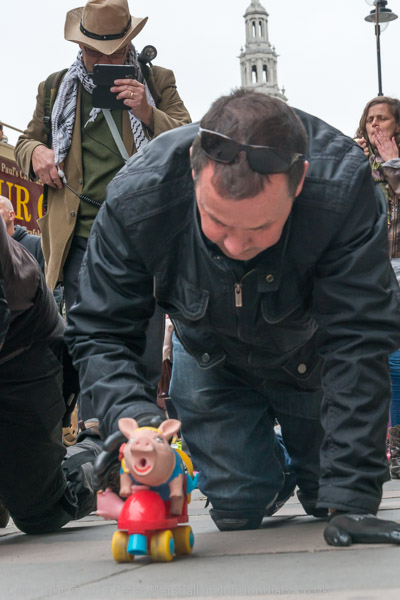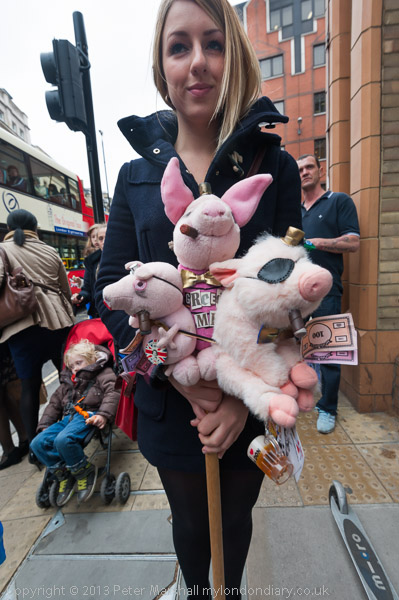Legal Aid Funeral & Daddy’s Pig: On Wednesday 22nd May 2013 lawyers held a mock funeral and rally against government proposals for further changes to legal aid proposed by Justice Secretary Chris Grayling. Legal aid had already been greatly restricted by the Civil Legal Aid (Remuneration) Regulations 2013 which had come into effect earlier in the year. I rushed away at the end of the rally to join Artist taxi-driver Mark McGowan who was pushing his Daddy’s Pig from Downing Street three miles to the Bank of England.
Lawyers Funeral for Legal Aid – Old Palace Yard, Westminster
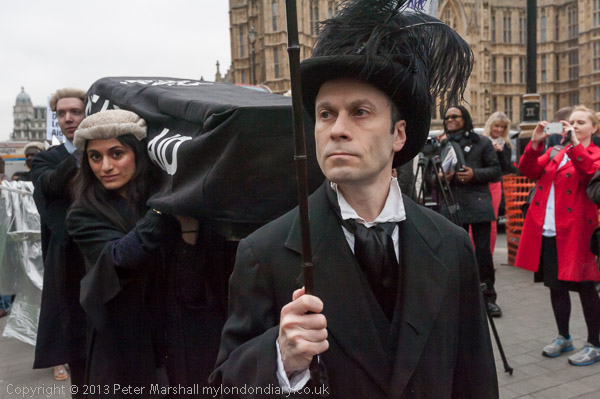
Justice Secretary Chris Grayling having made huge cuts in legal aid was now proposing to end the right of legal aid clients to chose their solicitor with the work going to the lowest bidder in ‘price competitive tendering’, PCT. This would be open to “to large non-legal companies, including Eddie Stobart and Tesco, and remove the ability of those in need of legal aid to chose appropriate specialists in the legal area involved.”

The short funeral procession to Parliament Square by the London Criminal Courts Solicitors’ Association was led by a marching jazz band, followed by robed and wigged figures carrying the coffin of Legal Aid and a woman dressed as the Scales of Justice.

As well as lawyers others joined the protest including Women from Winvisible, Women Against Rape, Defend The Right To Protest, Liberty and more. The proposed changes would particularly effect women involved in domestic violence and rape cases, and immigrants fighting for asylum.

There were many excellent speakers and on My London Diary I gave a partial list on My London Diary:
Labour MPs Sadiq Khan, Jeremy Corbyn and his fellow Islington MP Emily Thornberry, Natalie Bennett of the Green Party and senior figures involved with the law from both Tories and Lib-Dems. There were those who had been involved with legal aid over cases of injustice, including Gerry Conlan, one of the Guildford 4, a member of the family of Jean Charles De Menzes, Susan Matthews, mother of Alfie Meadows and Breda Power, the daughter of Billy Power, one of the Birmingham 6. Solicitors who spoke included Clive Stafford Smith, the founder of Repreive, and Blur drummer Dave Rowntree, and notable among the QCs, Helena Kennedy. There were many memorable quotes (almost all of which I’ve forgotten) with Gerry Conlan making clear “Back in the 1970s they sent innocent people to jail by the van load. But if these cuts go through they’ll be sending them in by the Eddie Stobart truckload“.

The rally ended with “a summary by leading barrister John Cooper QC after which the whole assembly delivered its verdict on Grayling, guilty as charged.”

The plans for PCT were dropped in September 2013 but didn’t go away entirely with new plans to introduce it in 2016, and it took a High Court ruling in 2018 to quash proposals to use PCT for Housing Possession Court Duty schemes.

Legal aid remains unfairly restricted and in only the very wealthy and those of the very poor who are able to access legal aid are almost “equal under the law”, with the great majority of us being able to afford it. And of course the wealthy are able to use much greater legal resources than legal aid will ever provide.

True equality under the law would only become possible if we made a huge systemic change to essentially nationalise our whole justice system, making it entirely a public service.
More on My London Dairy at Lawyers Funeral for Legal Aid.
Daddy’s Pig heads for the Trough – Downing St to Bank
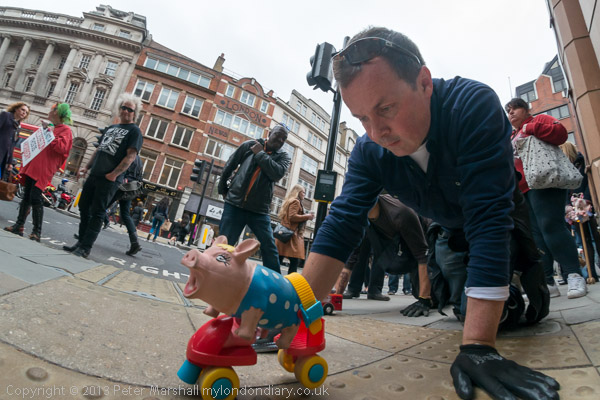
Artist taxi-driver Mark McGowan pushed his Daddy’s Pig, accompanied by another protester pushing a fire engine, the three miles from Downing St to the Bank of England, hoping to present it to the governor for services to austerity and the criminal activities of the City of London.

McGowan had a small group of supporters with him as he undertook the second stage of his gruelling journey on hands and knees, pushing the pig on its plastic roller skate.
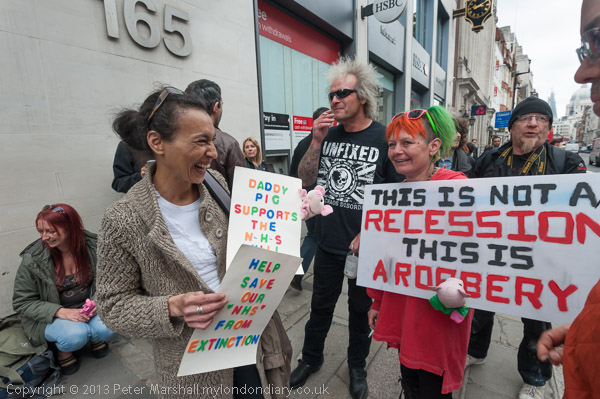
A few days earlier, he had pushed the pig from from Kings College hospital in Camberwell where he is receiving cancer treatment to Downing street as a protest against the privatisation of the NHS which is being driven by the bankers and private equity firms.

I walked with him and his pig on part of the second half of his painful slow route, joining him at the Royal Courts of Justice and leaving him and his colleague with the fire engine as they rested briefly before reaching Ludgate Circus. Even with knee pads and gloves the going was tough and Mark was struggling to meet his appointment with a banker at 3pm.

Daddy’s Pig heads for the Trough
Flickr – Facebook – My London Diary – Hull Photos – Lea Valley – Paris
London’s Industrial Heritage – London Photos
All photographs on this page are copyright © Peter Marshall.
Contact me to buy prints or licence to reproduce.
